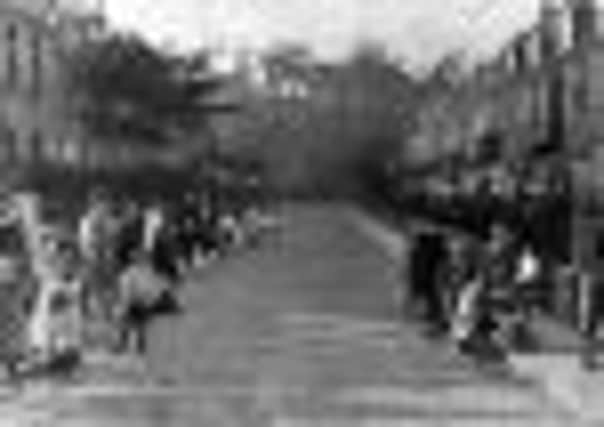Sheila Gilmore: Rich heritage was left to us by inadvertent visionaries


I hope, though, that visitors also stopped to admire the architecture of the “Colonies” themselves. For many years I’ve been an advocate of this style of building and living. I’d also just finished reading Richard Rodger’s recent book on Edinburgh’s Colonies. What came through strongly was just how deliberate this style of housing was:
A distinct and independent entrance; secondly a plot … for bleaching or for flowers; thirdly water closet; fourthly a scullery with washing tubs, bath and hot water.
Advertisement
Hide AdAdvertisement
Hide AdThe third and fourth have long since become standard but somewhere along the way we have often lost sight of the importance of having one’s “own door” and bit of garden.
Another important strand was the encouragement of home ownership for working men (admittedly this meant skilled tradesmen) which was radical for its time. Home ownership was seen as giving people a real stake in their home and area, and was accompanied by a drive to maximise the affordability of building costs and the availability of affordable lending arrangements. While in the end only 39 per cent were owners and the rest tenants, this was still a remarkable development for the time.
One new thing I learned from the book was that the Edinburgh Co-operative Building Company (which built most of the Colonies) also dipped its toe into building tenement style (a block at Henderson Street in Leith is still standing) and found these both more expensive to build and much harder to sell. A lesson there for the 21st century.
The most popular council houses have been those that followed some of the colony principles, the cottage style, the four-in-a-blocks where each tenant had his or her own door, and terraces. In the 1960s, councils in the cities were seduced by the apparent efficiency of land use by building high rise flats, and this was encouraged by generous government grants for such buildings.
But Edinburgh’s Colonies are flourishing and sought-after 150 years on, while many of the 1960s high-rise blocks have been demolished.
More recently, we’ve seen the rash of standardised blocks of flats across the city, with very similar styles of buildings set amid groomed but sterile open space. The credit crunch and recession has halted this march. A silver lining from this market failure would be if developers and planners re-thought their approach.
Traditional colony living may not be for everyone, but it does help to deliver the high density demanded by land shortage and high land prices. High density is favoured by many city planners on the grounds that it gives the critical mass to provide good facilities and transport links. It has tended to be assumed that this can only be delivered through flatted developments but the Colonies model provides a different route.
I was therefore particularly interested to see a proposed development coming forward from Places for People for a site near Easter Road which was branding itself as “new Colonies”, and I will be closely following the progress of this application.
Advertisement
Hide AdAdvertisement
Hide AdThe current Edinburgh council administration made much in its election manifesto of wanting to be a co-operative council and it is worth noting that the original colonies were built by a co-operative of building workers, formed during a period of recession when work was hard to find. Another aspect of the Colonies experience which could well be adopted today.
Edinburgh east is rich in Colonies. As well as Abbeyhill, there are those at Leith Links, at Lochend Road and the Ryehills and Cornhills (which adopted a slightly different approach of traditional street frontages and internal stairs). The city council is currently consulting on a proposal to make some of these conservation areas. It is important to protect these areas, hopefully without making it to difficult for people to be able to improve them to modern standards.I look forward not just to the ongoing success of Edinburgh’s Colonies but to their reinterpretation for the 21st century.
• Sheila Gilmore is Labour MP for Edinburgh East
Conservation status studied
The city council has carried out “character appraisals” of the Edinburgh Colonies with the aim of deciding whether they merit conservation
area status to protect their historic and architectural importance.
Exhibitions are being held at venues across the city, including:
n McDonald Road Library
Exhibition from Wednesday, October 3 to Tuesday, October 9. Planning staff will be in the library on Monday, October 8, from 3pm-7.30pm
n Leith Library
Exhibition from Thursday 11 October to Friday 19 October.
Planning staff will be in the library on: Wednesday, October 17, from 3pm-8pm
The consultation closes on October 24.
The final date for submitting comments on the proposals is the same date.